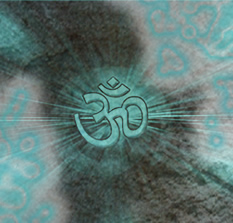About Yoga
what is yoga?
Yoga means “union” or “to yoke” in Sanskrit. It drives from the verbal root, yuj which means “join”. It is the bases of the English word yoke, meaning to bind together or join.
The common definition of yoga is the union of the individual soul with the universal spirit. Yoga is both the practice and the experience of the ultimate freedom of the heart. It is both a path to spiritual fulfillment and the experience of fulfillment itself.
Through the yoking of our bodies, minds, and hearts to a higher power of existence, we can awaken the shakti, or spiritual energy hidden within, and our highest capabilities are revealed.
The more often we experience the state of union through our yoga practice, the more we become established in an elevated vibratory state of consciousness. So when we are confronted with stressful and challenging events in our life, which would normally knock us out of alignment, we are able to sustain our yogic state. We are then better able to respond to difficult situations.
Yoga means “to yoke”
Eight Limbs of Yoga
Yama: self-control, social ethical precepts
Niyama: observance of duty, personal ethical disciplines
Asana: physical postures
Pranayama: breath control, breathing excercises
Pratyahara: inhibition or withdrawal of the senses
Dharana: mental concentration
Dhyana: meditation or unbroken mental focus
Samadhi: absorption in the spirit or with the Absolute, enlightment
The Yoga View on Balance
The three Gunas
In the philosophy of Yoga, all matter in the universe arises from Prakriti, the primal creative or natural force. It is the natural-original state; the term is derived from Sanskrit pra, meaning “beginning,” and kriti, meaning “creation.”
From this ethereal Prakriti emerge three primary qualities called Gunas, which are the essential aspects of nature.
Guna means “strand, thread or rope,” and thus the Gunas are the intertwining forces that weave together the material world, which encompasses all energy, matter and human consciousness. The three Gunas are:
Tamas–darkness, inertia, inactivity and materiality
Rajas–energy, action, change and movement
Sattva–harmony, balance, joy and intelligence
All three gunas are present in all beings and objects in varying amounts. Too much Rajas or Tamas is not beneficial for our mental health and overall wellbeing. Ideally, every yoga practice brings us toward a state of balanced attention and intention–Sattva.
As conscious beings, we have the ability to work with the Gunas in us by:
what we choose to pay attention to
what we choose to consume, and
how we choose to act.
Simply put, it is our attention and intention that changes how we see the world. In life, we will experience fluctuating movements of Rajas or Tamas, but as we spend more time moving toward a Sattvic state, we’ll end up being happier and healthier.
Sanskrit
what is Sanskrit?
Sanskrit is the sacred language of India and literally translated Sanskrit means “perfectly constructed speech”. Sanskrit is the language in which mantras and relevant sacred scripts are written and spoken. It is also the language of the true names of the asanas (postures), the third stage of yoga.
Surya Namaskar (Yoga’s salute to the sun)
A Surya Namaskar sequence offers the perfect balance between strength and flexibility, contraction and expansion, movement and stillness as the body goes from upside down to right side up, moving forward and back and from side to side. Yoga’s salute to the sun awakens and warms the whole body, preparing it for asana practice…the body moves through it s entire range of motion, linking the poses together on the wave of the breath.
– Yoga Journal
Modern Paths of Yoga
The nine modern paths of yoga
| Bhakti | the yoga of devotion |
| Hatha | the yoga of the body |
| Jnana | the yoga of wisdom |
| Karma | the yoga of service |
| Kundalini | the yoga of latent spiritual awareness |
| Mantra | the yoga of sound |
| Raja | the yoga of the mind |
| Tantra | the yoga of sexual polarity |
| Yantra | the yoga of vision |

The Sanskrit Symbol for OM
The Sanskrit symbol for OM (AUM), the primordial syllable exemplifying the vibrational power of sound.
Om! This syllable is the whole world, the past, the present, the future—everything is just the word Om
– Mandukya Upanishad
OM does not necessarily mean anything. It is merely the sound of the Sanskrit vowels vocalized. It is the primordial sound in Sanskrit.It brings the mind to a calm, primed place,from which a single pointed focus through meditation and asana practices is brought about.Reciting OM alone is also chanting, but when added to other Sanskrit words or sacred names, which resound in vibrations throughout the body, the possibilities become limitless.Chanting Sanskrit is yet another tool to reach enlightenment
– Living yoga







